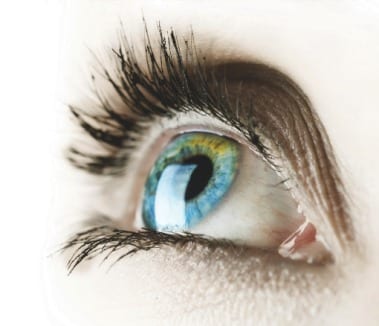By Louise Gagnon
Fat removal is commonly performed as part of a lower lid blepharoplasty, but at least one oculoplastic
surgeon says this is not necessary.
“Lower lid blepharoplasty is not about fat removal, but it’s about camouflaging the eyelid cheek junction and restoring volume,” says David Jordan, MD, FRCSC, FACS, of Ottawa, Ontario, Canada, at the 76th annual meeting of the Canadian Ophthalmological Society. Instead, reposition the fat to your advantage. “You can use it to cover the tear trough.”
Along with avoiding fat removal, Jordan also supports the preservation of the lower lid obicularis oculi muscle and the removal of minimal skin.
Complications such as chemosis can occur with lower lid blepharoplasty, and usually last about 6 to 8 weeks following surgery. Lid swelling can also occur, and disappears about 2 weeks postoperatively, he says. “I think [lid swelling] is due to how much skin is removed from the obicularis,” Jordan says. “I remove less and less.” He has not seen any cases of diplopia postoperatively when performing lower lid blepharoplasty.
NEW FILLER RISK: LATE-ONSET PERIOCULAR SOFT-TISSUE MASSES
Warning: Patients need to be closely questioned about their cosmetic filler history because of the potential for late-onset complications like periocular soft-tissue masses. Three cases presented at the meeting suggest that such soft-tissue masses, secondary to Hyaluronic acid (HA) filler injection, can develop.
Three patients developed delayed-onset, soft-tissue swelling, with and without formation of granulomas near the eye, after injection of HA, which is why they presented to ophthalmologists, explains Nawaaz Nathoo, a third-year ophthalmology resident at the University of British Columbia in Vancouver.
Biopsies and computed tomography scans were performed to exclude other pathologies, Nathoo says, noting one patient was BCRA1 positive, and it was suspected the mass may be related to that diagnosis, but that connection was ruled out.
“In theory, it (HA) should degrade in cutaneous tissues within 6 months,” Nathoo says. But “These patients presented anywhere from 2 years to 6 years after they had filler injection.”
| ONLINE EXTRAS | |
| Learn more about the Canadian Ophthalmological Society meeting at: http://tinyurl.com/lp8npfr |
Of note, the soft-tissue masses developed at sites fairly distant to the injection site.
“Patients don’t volunteer their [filler] history because of the time delay (and because the site is distant [from the site of injection]),” Nathoo explains. The injections in the three patients were performed by different dermatologists, and the soft-tissue masses could have been a reaction to microscopic contamination of the preparation.
There have been mixed reports of efficacy in the literature with using hyaluronidase and steroids to treat such masses. For now, surgical excision is likely the best treatment option, he says.
GRAFT SIZE COUNTS IN CORRECTING LOWER LID RETRACTION
Lower lid retraction following blepharoplasty is challenging to correct, but new research suggests that hard palate mucosal grafts measuring 6 mm or more in width may produce greater improvement than smaller-sized grafts, according to research presented at the meeting.
Lower lid retraction following blepharoplasty can be idiopathic or can be linked to thyroid-related eye disease, according to Sonul Mehta, MD, a fellow in the Division of Oculoplastics and Orbital Surgery in the Department of Ophthalmology and Vision Sciences at the University of Toronto.
The impact of the size of the grafts taken from the hard palate of the mouth for posterior lamellar grafting to treat lower lid retraction has not been studied until now. “Our hypothesis was that large grafts would result in greater improvement of scleral show,” Mehta says.
In the study, large grafts measured 6 mm and greater in width, and small grafts were less than 6 mm in width. Eight patients were in the large group, and 10 patients were in the small group. Investigators measured postoperative results at the 3-month mark in the amount of lagophthalmos, scleral show, and corneal exposure symptoms.
The improvement in scleral show in the small graft group was 0.9 mm, while it was 1.72 mm in the large group, which yielded a statistically significant difference. There was also a statistically significant difference in logophthalmos favouring patients who received a large graft. However, there was no significant difference between large and small grafts in terms of improvement in symptoms.
“The size of the grafts in patients with lower lid retraction does affect scleral show and lagophthalmos. There could be an effect of gravity,” Mehta says.
Louise Gagnon is a Canadian journalist, writer, and editor. Her career began at The Medical Post. She routinely covers dermatology, ophthalmology, cardiology, and neurology. Gagnon can be reached at [email protected].





